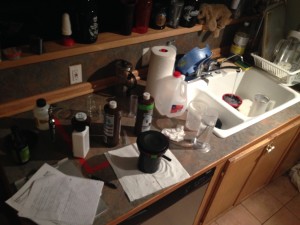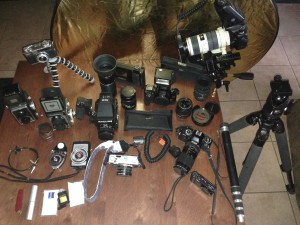Please check out my Film Photography Portfolio, or continue reading about my history with film photography.
My story with photography continues where my history with digital photography left off.
When my time at Zzyzx, CA – Desert Studies Center – was over, I decided to continue to journey through life instead of returning back home to North Dakota. I ended up meeting up with a long time internet friend of mine in Pahrump, NV and moved in with his friend and him. I ended up building a giant steel building in Snowflake, AZ with these guys, but also met a guy named Bart Cohen.
Bart introduced me to film photography. We would spend many hours talking over a bottle of Sailor Jerry rum and reminisce. He taught me a lot of things about photography and allowed me to pick his brain. He gave me a Zeiss Ikonta C to get me started. It shot a giant 6x9cm negative. Since I already had a pretty good 8MP digital camera, I wasn’t super interested in shooting 35mm film. The Zeiss shot medium format 120 roll film.
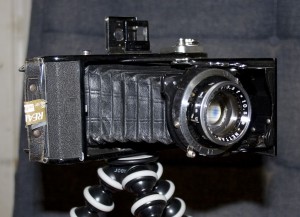
The bug was set. I’ve never had much disposable income, so I can getsuper amazing shots on B&W film using the top of the line lenses from history. The fully mechanical cameras are my absolute favorite.
After I lugged and shot many rolls of film through the Ikonta, I realized there were many leaks in the bellows of the old thing. So I had to start upgrading. Bellows are hard to come by, and the companies that used to make them are mostly out of business. I ended up getting another Zeiss Camera, a TLR called the Ikoflex. TLR stands for twin lens reflex, it actually uses two lenses, but only one to take the actual picture. The top lens is diverted through a mirror onto a lens that you look down onto from the top.
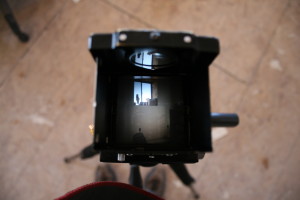
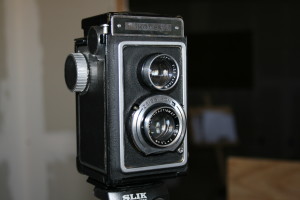
I’ve also gotten a bunch more cameras throughout the years, and even joined a few clubs and got other people interested in film. Film is still accessible today and hasn’t been completely outpaced by digital cameras, yet. The medium and large format films can easily shoot images with higher dynamic range and offer tighter and clearer pictures because they can be scanned at an equivalent of 50-100MP+ depending on the size of the negative.
